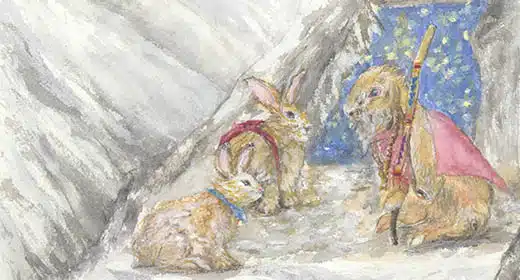by Jesse Klein: As an influx of westerners flock to the shamans of South America, commodification and commercialization of this indigenous practice seems inevitable…
More ayahuasca retreat centers exist today than ever. And for the first time in history, yagé is being brewed outside of the Amazon.
As this is happening, it is bringing up many questions to the table about spiritual tourism, cultural exchange, participant responsibility, indigenous conservation, resource preservation, and more.
WESTERN FASCINATION WITH SHAMANS
Ayahuasca tourism is really fueled by westerners’ romanticism of the shaman. These days, there is access to the plant all over the globe. But ayahuasca seekers usually turn to South and Central America in the hopes of an authentic ayahuasca ceremony, akin to the traditional indigenous ones they’ve heard or read about.
The Western fascination with shamanism goes back centuries to the early colonization and exploration of the Amazon. Shamans were initially seen as demons or savages. However, over the centuries that fear has yielded to the mystical allure of the unknown or misunderstood.
According to a dissertation from Evgenia Fotiou at Kent State University,
“The Western fascination with shamanism—including psychoactive plants and substances and the changes in consciousness that they produce—is deeply rooted in Western intellectual tradition.”
Authenticity Challenged by Western Stereotypes
“Shaman” isn’t even the correct word to use when referring to ayahuasca healers. In the local Spanish dialect, shamans are called ayahuasqueros or curanderos. In the indigenous languages there are many different names for the healers. But often the word means “the one who knows,” like onanya in the Shipibo tribe. Westerners have romanticized and idealized the notion of the shamans, equating them to saints of the natural world.
“Worse than anything, the shamans have to be likened to priests, that they are non-materialistic” said Carlos Suárez Álvarez, Spanish journalist, author, and ethnographer. “This is absolutely insane and a big problem. Shamans are simply specialized in healing.”
Westerners are conditioned by Christianity to give themselves over completely to a religious leader. Suárez Álvarez says that westerners come to ayahuasca retreats in the Amazon and tell shamans that they can “do whatever you want to me.” This is not part of the indigenous culture; the power imbalance has caused problems like sexual abuse during ceremonies.
“Locally, shamans are usually considered witches from someone else’s point of view,” he said. “They are potential sorcerers. You go to the healer and you are scared. They are needed but they are feared, because they can heal but they can also do harm. No one goes there saying, ‘Oh, you do with me whatever you want’ [the way westerners do].”
Stereotypes about shamans have become stronger as more westerners seek an alternative to the high tech, capitalist world. A healer connected to the Earth becomes even more desirable and trendy.
WESTERN INFLUENCE ON INDIGENOUS CULTURES
Contrary to general Western belief, ayahuasca is not the center of the indigenous or local healing tradition. For millennia, local people were constantly in touch with this natural wealth and explored it for many reasons, including for healing purposes.
The Amazon tropical rain forests are the epicenter of global biodiversity. About 80,000 of the planet’s more than 300,000 known plant species thrive there. Herbalism is at the heart of shamans’ healing knowledge, which developed into specializations, one being ayahuasca. There are healers specialized in other plants or preparations, such as tobacco, perfumes, camalonga, etc. Many other plants complement work with ayahuasca, either as a part of the ayahuasca brew, or as steam baths, flower baths, perfumes, or as plant diets. Similar to our universities, specialization requires years of learning.
Ayahuasca Tourism is a Double-Edged Sword
The growing ayahuasca tourism has changed the tradition. On the positive side, ayahuasca and other healing knowledge is now a more appealing avenue of study to the local youth. The money coming in from abroad is an opportunity to earn a living wage utilizing their traditional culture. Many Shipibo youth are now interested in becoming shamans, something that wasn’t interesting before because there wasn’t any money in it. The retreat centers pay indigenous shamans much more than any other job and have allowed many more Shipibo kids to go college than in previous generations. There s a new opportunity for social mobility. Suárez Álvarez also notes that although he does criticize the market economy, he is also aware of the positive side, declining to criticize shamans who make money with ayahuasca.
However, there is concern that not all are adequately and thoroughly prepared for the job, as well as for commercialization and corruption of their tribes.
Brain Drain and Dilution of Indigenous Culture
“The villages have partly lost their medicinal knowledge as the people who know are going to the cities and the retreat centers to work,” Suárez Álvarez said. “There’s a new kind of colonization. I mean, it’s a better colonization, but still.”
Fifteen years ago, there were fewer than five ayahuasca retreat centers and an estimated 15 healers around Iquitos, Peru. Today, there are somewhere between 70 and 120 such retreats in the area, most of which employ at least one healer. Because ayahuasca has become globally popular and lucrative, other specializations are languishing and may disappear altogether.
But some retreats are adding plants to their ceremonies that were not previously present in a particular area. For example, healers around Iquitos previously didn’t work with kambo or rapé, but are now adding both to their services. This change is due to the influence from visitors who experienced such indigenous healing practices in Brazil.
Recipes for ayahuasca have been passed down through generations, sometimes as the secret of family healing tradition, or from a mentor to an apprentice during training. They are as varied as the regions of the Amazon. Besides ayahuasca and chacruna, preparations often contain other healing plants, including tobacco.
Cross-Cultural Pros and Cons
Over time, the use of ayahuasca spread beyond the indigenous groups, and was adopted and further developed by mestizo healers. The increasing commercialization and internalization of the ayahuasca preparation has led to a few recipes and ceremonies becoming the standard. Today, it is mostly known as a combination of ayahuasca vine and chacruna leaves. The focus on this one recipe could cause other lesser-known treatments to be forgotten and lost.
Whenever two cultures meet, changes and adaptations are inevitable. Recognition that both cultures are valuable and important sets the foundation for a mutually respectful relationship that can benefit both. If done well, the knowledge is properly understood, integrated, and possibly even upgraded in a way that is respectful to its origins.
WESTERN PERCEPTIONS OF AYAHUASCA CEREMONIES AND INDIGENOUS CULTURE
The rain forest is the epicenter of the world’s diversity on many levels, whether biodiversity, diversity of indigenous groups, or forms of rituals like ayahuasca ceremony. A single traditional or indigenous form of a ceremony doesn’t exist. Each indigenous group developed their own form of ayahuasca ceremony. For example, open fire is strictly forbidden in some cases, while in others, ceremony may include singing or dancing around a fire. In some cultures, only the curandero ingests the plant. In others, both the patient and the healer ingest it. Women are allowed to participate in the Shipibo tradition, but not in others.
The ayahuasca experience is different for everyone. This applies both on a personal level and across cultures. People from Western cultures often have preconceived expectations about ayahuasca, especially regarding its visual effects. Ayahuasca may induce visual sensations, but these are not necessarily part of every ayahuasca experience. According to Suárez Álvarez, some retreat centers are adding other hallucinogenic plants to the brew or diet to evoke this part of the ceremony in guests. A popular additive is toé; it contains scopolamine and is very toxic.
How ayahuasca affects the individual is extremely varied. Integrative family physician, curandero, author, and speaker Dr. Joe Tafur has seen it help a variety of issues, from the physical to the mental, and has presented anecdotal cases in his book.
“A depressed person, a person with anxiety, a person with PTSD, a person with migraine headache problems, a person with psoriasis, a person with Crohn’s disease, they all improved with this approach,” he said. “It was a profound emotional healing that was the key to the shift, and that was facilitated by a spiritual context.”
Expectations are Premeditated Resentments
As ayahuasca has become an industry, it is hard to escape expectations and assumptions. But any experience a person has can be valuable. The absence of visual effects does not mean there is something wrong with you or the ayahuasca. The problems we have dealt with all our lives cannot be solved by drinking yagé once or even a few times. With ayahuasca, patience is the key. Placing unrealistic expectations on the effects of yagé, for example, could lead to disappointment, which may in turn block the effects the ceremony did have, and lead to issues with integrating the experience.
WESTERN ACCEPTANCE OF AYAHUASCA AS A MEDICINE
As indigenous cultures have opened their doors to westerners, Western science has started to accept ayahuasca as proven medicine. The mystical experience as a form of healing for mental health issues has become a trendy topic among scientific journals, research institutions, and doctors after years of snubs and rejections.
“Studies show you could actually influence something like tobacco addiction through a mystical experience,” Tafur said. “Once it starts getting published, then all of a sudden it’s okay and it becomes medically relevant.”
Medical professionals are starting to look at physical, mental, and emotional health as one entity, instead of separate parts. Physicians and psychologists are becoming more like shamans, interested in energy exchange and energy healing. Ketamine treatment is helping treat depression and MDMA is being used for PTSD treatment under the guidance of a psychotherapist.
“Anyone that has spent any time with [an MDMA therapist] and watches how they work, can’t deny there’s a spiritual element,” Tafur said. “They don’t turn their back on divinity or love or anything. They’re very open to allowing people to have whatever degree of mystical experience they need to have. We have to assume [the change] is at a biological level, too.”
Tafur goes so far as to call these psychedelic psychotherapists an “estimation of shamans.” While this might be the extreme version of western acceptance of indigenous cultures, all parts of the scientific world are slowly tiptoeing toward an recognition and approval of this type of healing.
WESTERN DEMAND AND SUSTAINABILITY
The demand for ayahuasca is increasing both in its native environment and in its exports. The increase worries environmentalists and indigenous people who are concerned about the sustainability of its popularity.
Ayahuasca is a unique plant, specifically found in the Amazonian rain forest, and it isn’t easy to grow. The vine takes 10 years to grow to maturity in the wild. Ayahuasca prefers to grow next to taller trees. There, it winds into the canopy to receive plenty of sun, which is scarce at the jungle floor. The key to protect the wild population of ayahuasca is the protection of old and tall jungle trees. This requires protection of the entire Amazon rain forest. Ayahuasca may be one of the last tokens indigenous groups can still redeem to protect their cultures and environment.
But for many reasons, devastation in the Amazon is continuing. Ayahuasca tourism is one of the causes.
“It’s another natural resource that’s being destroyed from the forest,” Suárez Álvarez said. “The forest [is becoming] poorer.”
A Vicious Cycle of Profit and Deforestation
“The local price increases [of ayahuasca] reflect [particular] economic opportunities rather than shortages, plants increasingly grown to supply the growing demand of retreat centers. As a consequence, many farmers from the area are now planting ayahuasca and selling it to the healing centers. In other words, ayahuasca is becoming a commodity.”
MAPS Report
Ayahuasca plantations are cropping up as a way to meet the increasing demand, but they are still not the norm. Additionally, it takes a few years before an ayahuasca plantation will produce a mature vine.
“Most of the plantations don’t belong to locals or forest dwellers, either indigenous or mestizos,” Suárez Álvarez said “They belong to foreigners, people in the cities or people coming from other parts of Peru.”
Several ayahuasca plantations already exist with the aim of offering cultivated, sustainably grown vine. Sustainable harvesting practices, where roots are kept in the ground to allow the plant to regenerate, are also developing.
The pressure on the wild population of the plant is stronger, but at the same time the volume of cultivated and sustainably obtained yagé is growing. Given that ayahuasca cultivation is also a source of income for local people, the hope is that sustainable growth, harvesting, and use will continue.
Ayahuasca Tourists Have Local Responsibility
Westerners need to be responsible consumers. If they want to benefit from the plant, they should ask if the ayahuasca at the retreat comes from sustainable sources, become informed about pressing issues of indigenous communities and their cultures, inform others, donate to NGOs, and demand political responsibility.
Suárez Álvarez sees an inherent contradiction and incompatibility between a market economy and the traditions of the local societies.
“Market economy is hierarchical, relies [on] specialized production, accumulation and [exploitation] of … natural resources,” he said. “The forest dweller societies are egalitarian, without productive specialization. That allows them to have a balanced relationship with the forest. It’s great for those who are making money with ayahuasca and are able to send their kids to school and college, but then it is an individualistic success.”
What You Can Do To Help
There are many ways conscious consumers can help protect ayahuasca as well as all of the life in the Amazon.
Research retreat centers. Ask how they source the ayahuasca, as well as what efforts they are making to support the Amazon’s indigenous peoples. Ask about the area where their facility is located. Donating to preservation projects is another way to support sustainable use of Amazonian resources.
Outside of ayahuasca, just being more mindful and aware of the plants in your region can help the Amazon. Everything is connected. As Sita Sitaramaya, plant medicine practitioner, says,
“By taking care of the ecology around all of us, we are encouraging ecological conservatism. We don’t have to go to the Amazon or even donate money to do that. We can plant a tree. Sometimes we can get lost in the magnitude of the destruction that we’ve created. Then we get overwhelmed and then we give up. But even small changes and increased awareness is a step.”
CONTRIBUTORS
Carlos Suárez Álvarez
Carlos Suárez Álvarez is an ethnographer and author who lives in an indigenous community in the Colombian Amazon. He has published the novel Ayahuasca, Love and a Troubled Soul, the series of multimedia books Ayahuasca, Iquitos and Monster Vorax and the photo-book Ayahuasca Entre Dos Mundos. Suárez Álvarez holds a degree in journalism from the Complutense University of Madrid and a Masters in Amazonian Studies from the National University of Colombia.
Erika Oblak
Economist, environmentalist, and author of The Time is Now: The Teachings of Ayahuasca, Oblak has spent several years in Peru, learning from ayahuasca, and completed a few dozen teacher plant dietas. She advocates for global equity in the distribution of natural resources and the related issues of Indigenous communities. In her mind, the magic of visionary plants like ayahuasca resides in their teachings of deep ecological and healing knowledge.
Dr. Joe Tafur, M.D.
Author of The Fellowship of the River as well as an integrative medicine activist, Dr. Tafur learned how ayahuasca shamanism could be used to heal the emotional body. Dr. Tafur has spent years studying with shamans learning how ayahuasca can help heal the emotional body. He is an activist dedicated to education and bringing an awareness to issues which modern medicine lacks—the connection between spiritual and emotional health—which is where many mental illnesses occur





















































